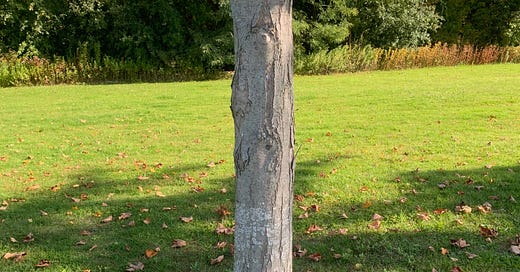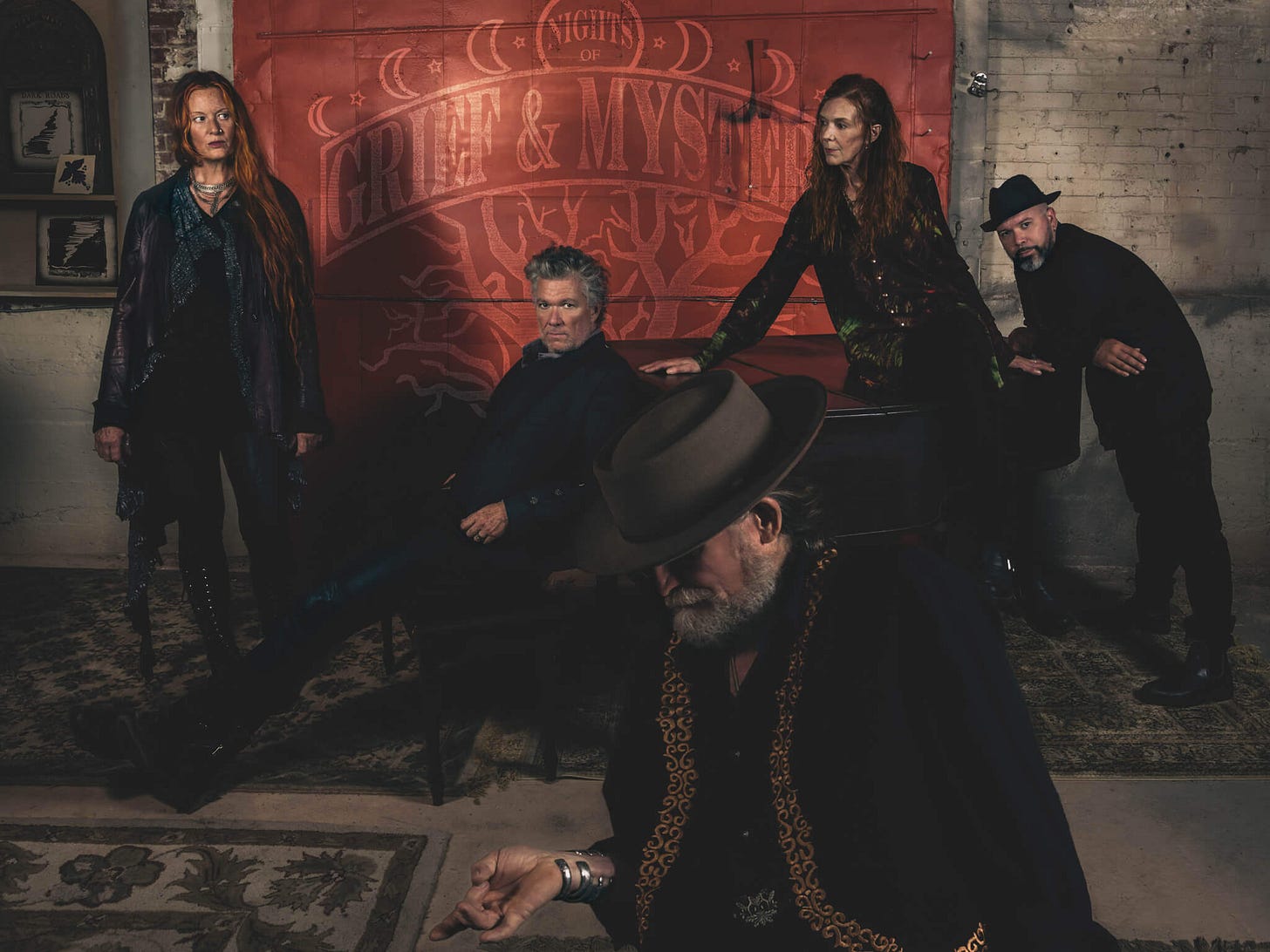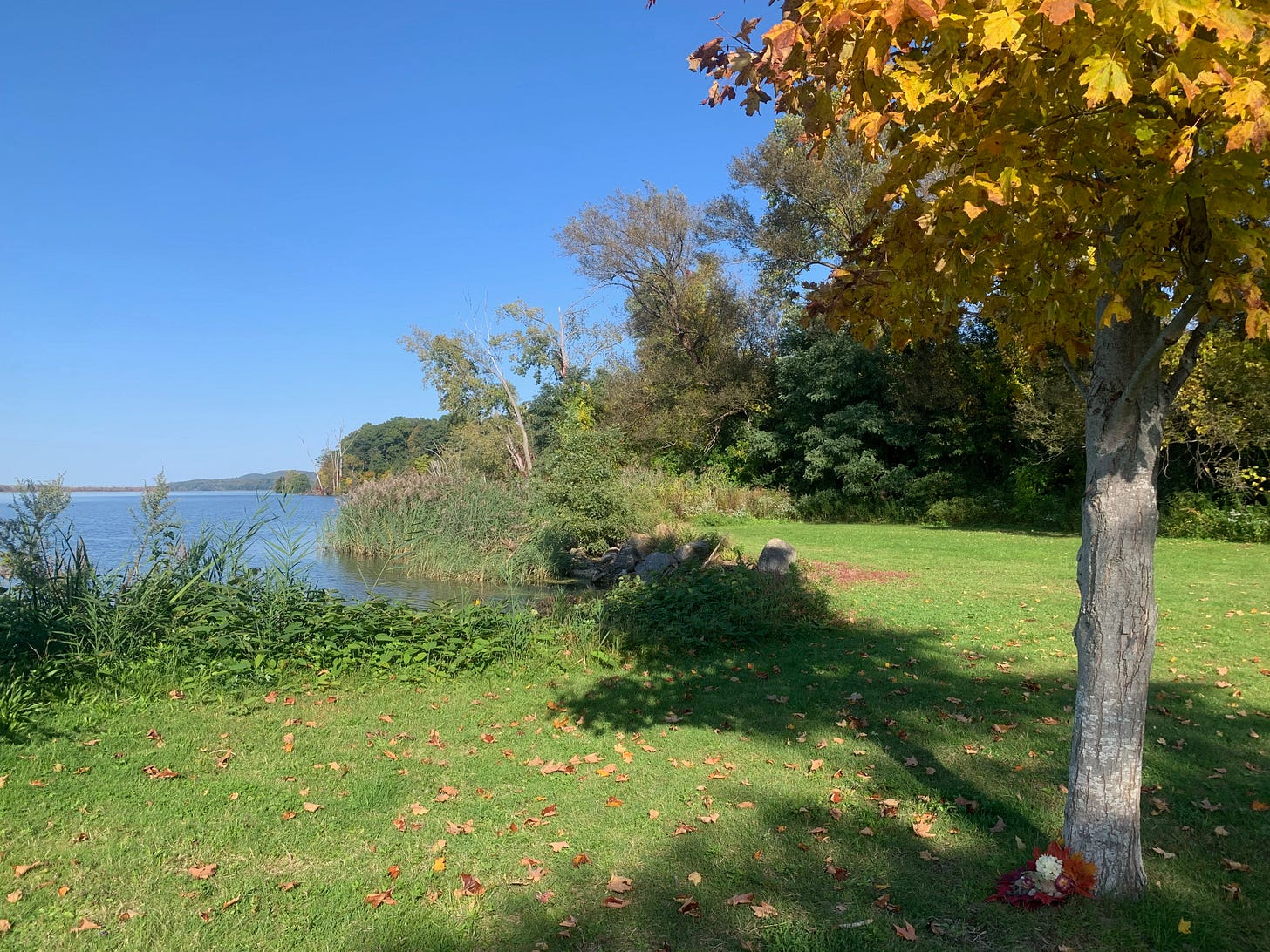Practice: An Altar to Regret
A recent invitation to "A Night of Grief and Mystery" inspired me to honor the parts I'd been ignoring. A ritual was the result.
Dear Friends,
Tonight I offer you a practice…a ritual. Not just words, but something to DO. Maybe this will come as a relief to those of you who are tired of reading about ideas; or to those of you who are ready to bring your insights into your body…to move with them, use your hands, feel things deeply, create something new.
A ritual helps us move through change mindfully. It is an action we take in order to assist in the transformation of something about ourselves, about life, or this place we call home. It’s the magic spell for transforming one thing into another easefully or beautifully: a bride into a wife, a relative into an ancestor, a child into an adolescent, a house into a home….one season into the next. It’s a creative collaboration with the Divine and forces beyond our limited perception. We can invoke and involve the gods, God, Goddess, the elements, archetypal energies, guardian spirits, teachers, ancestors, animal totems…
A ritual is performed consciously and deliberately. We act in the manner of the sacred; mark the space as sacred; become the sacred, and set the time aside from the mundane. We honor what’s happening with our attention and our intention. When I am performing and creating rituals, I often feel myself inspired in the literal sense—filled with some animating energy beyond my own small self. A lot of the time, I might put the wheels in motion, but then it feels like someone or something else starts driving. I know the ritual is working when I feel it has a life of its own or feels suddenly like something I cannot not do. There is a fair amount of letting go that has to happen for the ritual to really take this turn into the unexpected.
The ritual I want to offer was inspired by a performance by the great storyteller and sage, Stephen Jenkinson. Last Friday night, I went to see his traveling show called Nights of Grief and Mystery at an abandoned church in Troy called Our Lady of the Apocalypse. Fitting, right?
Stephen Jenkinson has spent his life in what he calls “the death trade,” meaning he has been a palliative care worker and support to the dying and their families for decades. As a result of this intimacy with the end of life (and possibly for other reasons, too), he knows a lot about being human. A lot. I was struck by the depth of wisdom that he has extracted or been granted by his dedication to the death process, to dying, and also of course, to living. As he says: You die in the manner you lived.
The show was moving and challenging in moments. The grief part was there and so was the mystery. They really delivered. Towards the end, in the midst of a spoken word poem, he said something that caught my attention. I wish I had a transcript so I could quote it directly, but I don’t so I’ll summarize. He said something about picking up stones and carrying them down to his regret altar. He talked about weighing the stones, feeling their heft and shape, really taking in their solidity and offering them, stacking them, or placing them somewhere he could visit as often as necessary.
I’m not sure if he was describing his own practice or if he was offering us an idea…I immediately registered it as something I wanted to do, too. In that moment it felt strong, like a compulsion, like something I’d been missing. So, I did it.
Here’s what I did. If it speaks to you, please feel free to adapt it as I did from Stephen. It’s a strong ritual that travels so lightly between folks. Here is what I made and if you read on, you’ll learn how I made it:
Ritual: An Altar to Regret
Step One: Go for a nice, long walk and pick up 5-10 stones that call to you. You don’t need to know what your regrets are just yet. I found that walking with the intention to open a dialogue with the regrets was a powerful way to re-engage these long ignored energies and memories.
You don’t need to know immediately what they are, though I found that they were very eager to talk! As soon as I committed to seeing them, being with them, and honoring them, they were happy to step out of the shadows where I’d sequestered them. There was something nice, though, about starting the ritual with this slightly unconscious collection process. It was all about letting my psyche choose.
I chose stones of different weights, sizes, colors, textures and shapes. I wanted a variety. I brought a small tote to carry them in.
Step Two: Find your regrets. I sat in deep meditation and contemplation in order to resurface and review my regrets. I kept a notebook nearby and jotted down events and experiences that came to mind. The process was delicate and required self-compassion. Of course, the nature of regret is that we wished the thing had never happened, or we hadn’t said what we said, or that we’d done the thing we didn’t or couldn’t then.
What I learned is that regret unexamined can be a kind of resistance to what actually happened. But examined, the regret contains a seed of great wisdom. By not opening to receive the lesson in the regret, we miss the wisdom, too. The wisdom might be something educational like, “Well, I’ll never do that again,” which could save a lot of karmic trouble down the road! Or it might be something more subtle about trying to please others or being afraid of certain situations or missing something important.
My unexamined regrets were stockpiled in a kind of memory lockbox in my psyche. I was holding onto them, but not really being with them. My soul knew they were precious and important and so I kept them, but my ego was eager to not investigate too deeply for fear of being exposed.
With a great deal of compassion and tenderness, I made space for my deepest regrets to come to light. I found a way to open the lockbox gently. And I wrote them down in simple, non-judgmental sentences. Just recorded them as having happened. I left no stone unturned (so to speak).
Step Three: Acknowledge the reality and importance of each regret by assigning it a stone. I found this part to be deeply satisfying. I loved how the stones I’d chosen seemed to match the quality of the different regrets. I’ll give you a couple of examples without exposing too much. This was a private ritual, but this might help you understand…
One of my regrets was about not being braver and more available to my grandmother and the time of her death. For this regret I chose a large and sharp stone to represent the sharpness of the fear in that hospital room.
Another regret was about the first time I yelled at my daughter. She was three and I was at the end of my rope. For this one, I chose a small, white crystal to represent her innocence.
With each regret, I would hold the stone in my hands and really feel it; study it. I allowed the stone to tell me more about the regret than I could even remember. And I allowed the regret to enter the stone.
Step Four: Listen to your regrets/stones until they offer up their seed of wisdom. I journaled this part and found that writing helped me really excavate each regret. This took me a couple of sessions. I focused on eight key regrets knowing I could always add another stone to my altar later.
I used this format for each:
I named it. What is the incident or experience?
I felt it deeply. What feelings arise when I remember it and tune into it?
I heard it. What is the teaching or life lesson in the regret?
I opened to its compassionate wisdom. What is the medicine or gift it has to offer my soul on its journey?
I received it fully. Does this require me to make a commitment or to forgive myself or another? Can I do this?
I thanked it. Offering an expression of sincere gratitude for the experience and its wisdom.
There was a difference between the life lesson in the regret—like a better way of being in the world—and the gift it had to offer. Where the lesson felt like a teaching, the gift felt like a healing. See if this distinction holds true for you.
And the best part was getting to the place where I could feel genuine gratitude for these seemingly “bad” things I’d done or that had happened to me. The gratitude felt like the integration.
Step Five: Make your altar to regret somewhere that you can visit it. I liked this detail that it should be a more permanent or semi-permanent spot. I often make mandalas in the woods or on the riverbank: places where the natural objects I use can be blown or washed away. I thought about making it in the yard of my house, but that felt a bit close and also I can’t be sure how long I will be here. So, I chose a spot down by the river in a public park that is rarely used. I meditate at this park and I liked the fact that it’s a nice walk for me to get there.
It felt wonderful to march down to the river proudly carrying my bag of regrets. I brought along some flowers, fall leaves, and a small branch from the apple tree in my front yard. When I got there I searched for the spot and found it at the base of a tree. I arranged the stones and then decorated them with the foliage and some treacherous seedpods that seemed to want to be a part of the process. Then I sat with them in this new home and looked out to the river. I said a small prayer and when it felt complete, I left. I walked away from my regrets then, but not as before, with the desire for them to go away. This time I felt integrated—I was truly carrying their wisdom with me.
Here is my regret altar in its setting. I like how it looks in this photo like the tree’s shadow is growing out of the regrets…like they are sprouting, growing new life already.
I hope you enjoyed this glimpse into the way my process works. I hope it might inspire some of you to do your own version. If you DO and you learn something that might benefit or inspire others, please feel free to share it here in the comments.
I did this practice with my Joy of Embodiment cohort and it was beautiful to witness a group of people all willingly sit with their regrets. We all felt how good and human and right it feels to be with people who are willing to accept even these “unacceptable” aspects of themselves and hold them with compassion. I know this is the kind of person I want to be—one in touch with my whole, fallible humanity, and willing to take responsibility for my actions and their effects in the world. And it’s the kind of culture I want to be a part of creating—one of sincere tolerance born out of the acceptance of all it means to live a full human life. That’s a good legacy.








